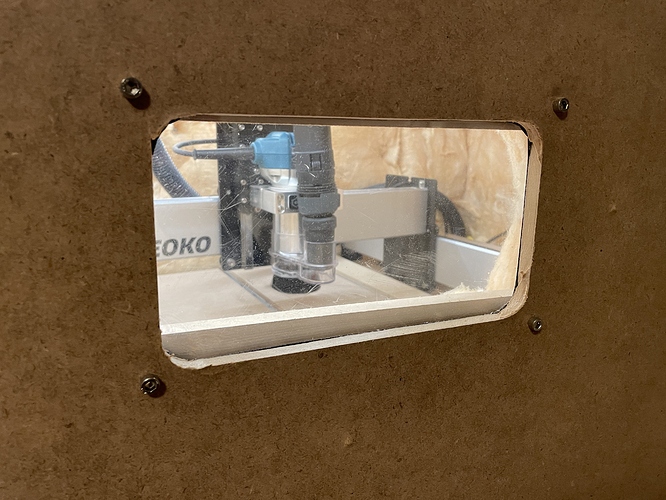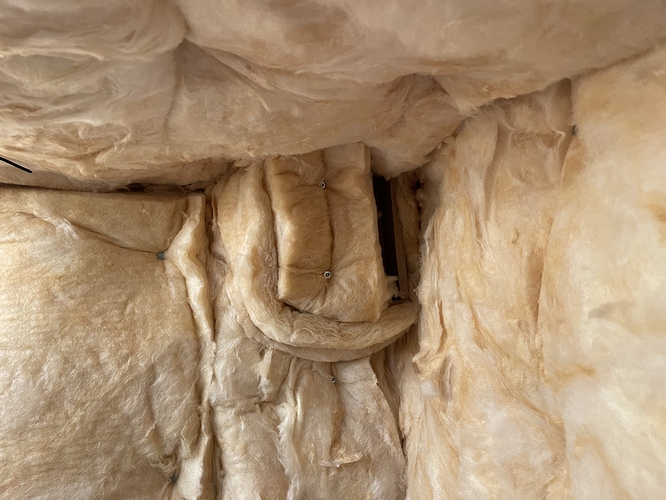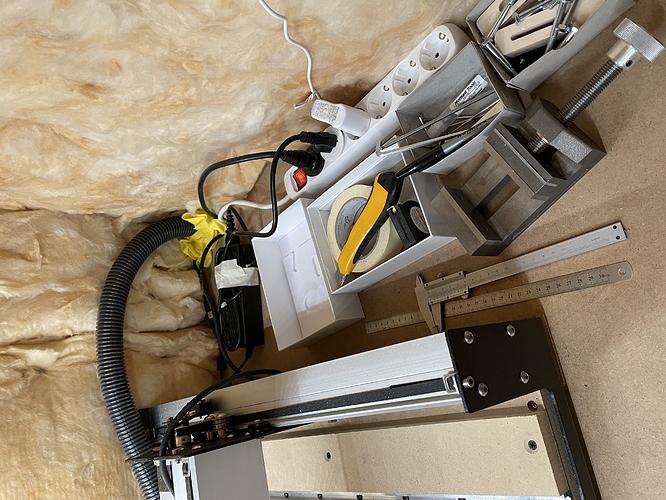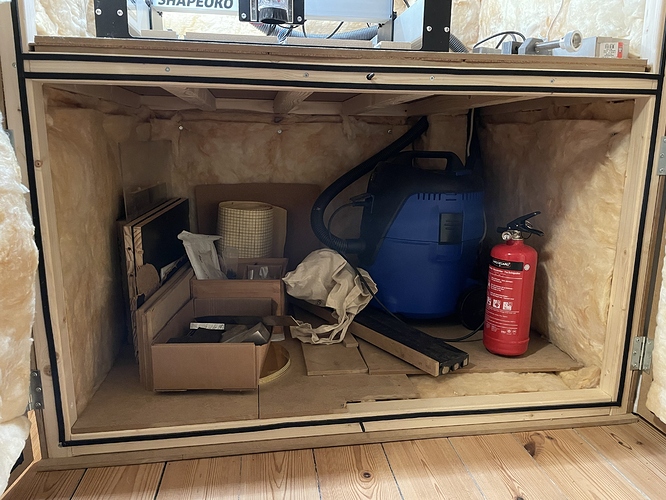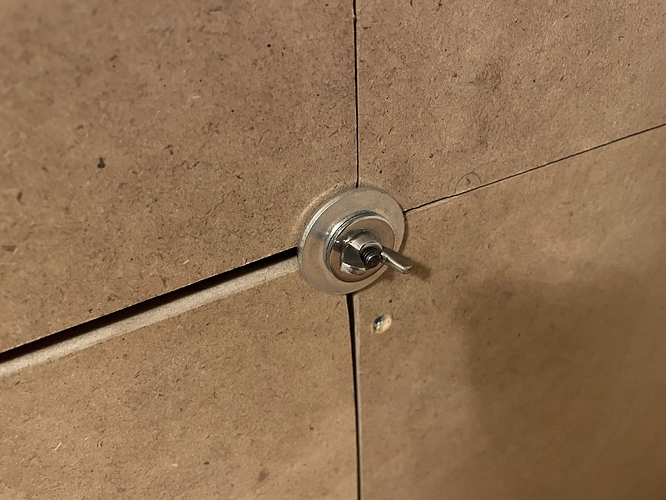I just finished the enclosure today. It became really ugly (girlfriend is not too happy), but it seems to be doing its intended purpose really well, which is to lower the noise.
Here’s how it ended up:
I’ve only tried it with the vacuum on so far and it seems to lower the noise dramatically. I’ve also tried to feel in the baffles in the back and it’s quite clear that it sucks in air from the top baffle and releases air from the bottom baffle, so they seem to work as intended as well.
I ended up with a weird solution for locking the doors tight (as you can see in the pictures). It works really well (the seal is really tight), but it’s an annoying solution since it takes some time to open and close the doors. I didn’t know what else to do with the design I ended up with. If you have any ideas let me know!

